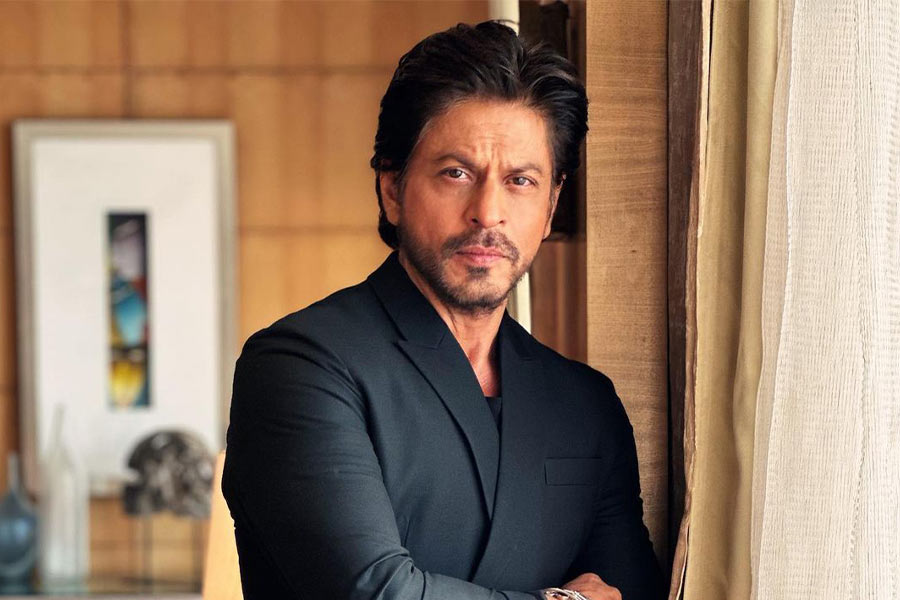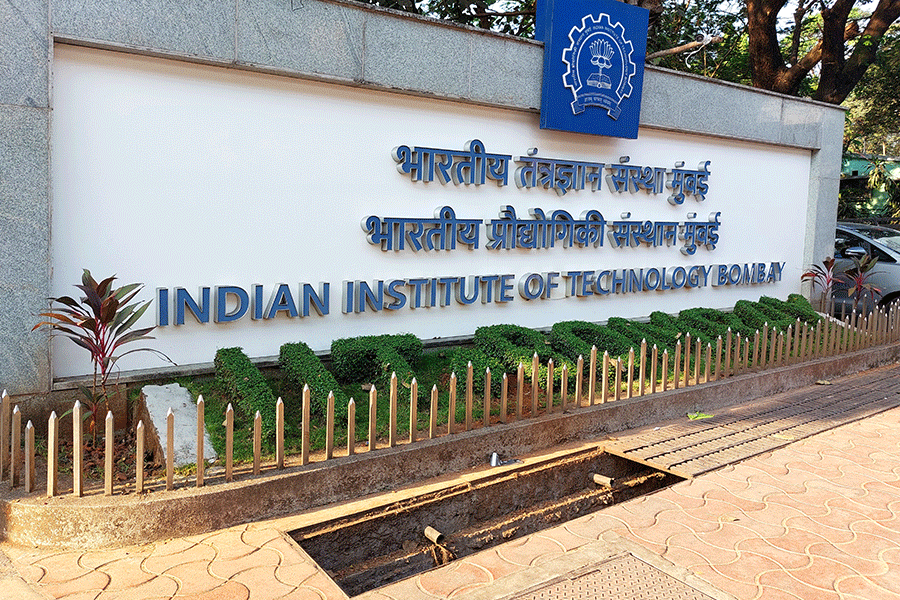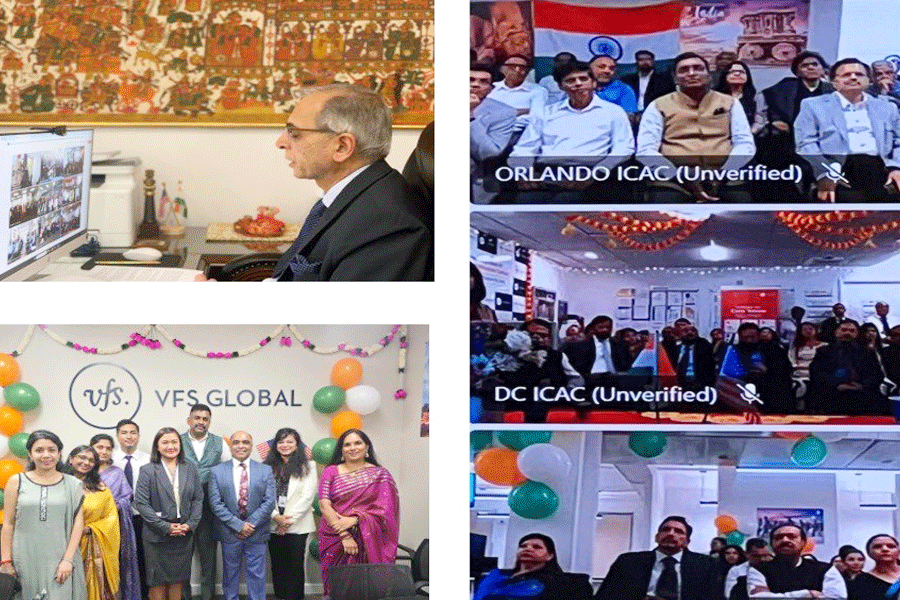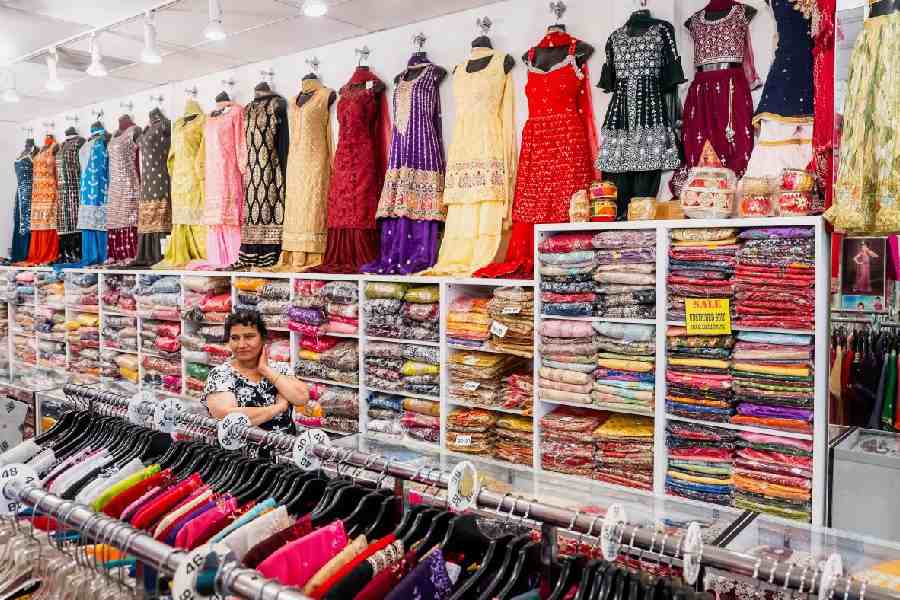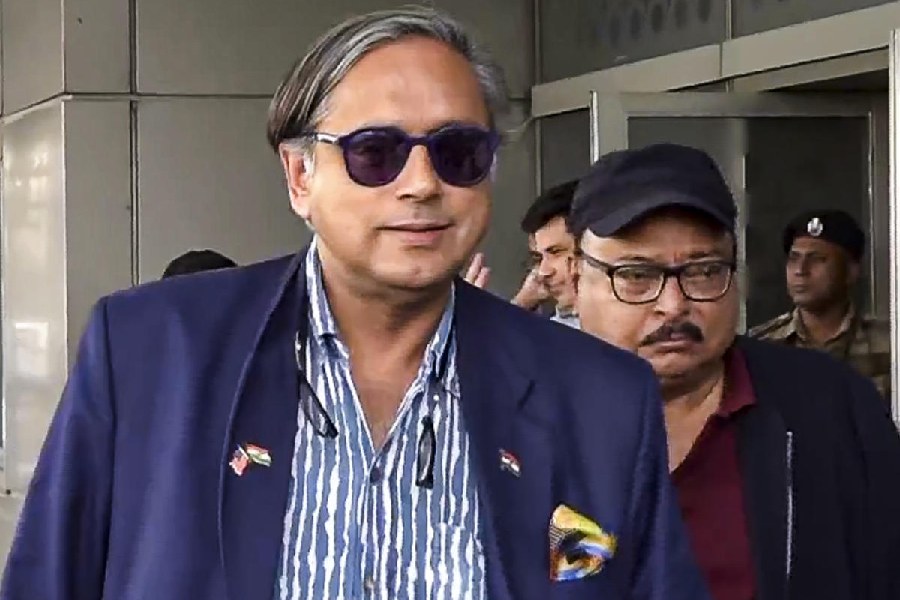

Road (top); (above) a British lifestyle magazine from the 1950s
Rosy is in her 60s. That morning, she is dressed in a T-shirt, cardigan and three-quarter printed pants. Her hair is tied in a ponytail. " Mereko waisa cut mangta hai, idhar dekho... I want that cut, look," she says, as she taps Rafique on the arm and points to one of the dresses hanging from a rod on the wall.
Rafique is the oldest tailor at Abdul Karim Ladies Dress Makers, located on central Calcutta's Elliot Road. The octogenarian has been stitching clothes for the Anglo-Indian community for decades now.
India's Anglo-Indian population was about 5,00,000 in the late 19th century. Now it is 1,50,000. Bengal has a community of 40,000, and in Calcutta, they are concentrated in pockets such as Ripon Street, Elliot Road and Royd Street.
Rafique turns back to glance at what Rosy is pointing to, nods and wordlessly slips into the next room where his many-tiered lunch box awaits him. It is only after he is done with his meal and settled behind a big desk that he starts to tell his story.
The shop was established by his father before Independence - he cannot remember the date. And he joined him in 1960. "I remember coming to Howrah from Amta by bus and walking down a good 6 to 7 kilometres till here. It was the same routine every day. After my father passed away in 1975, I took over. It's time for me to retire now," he stops short.
Ting ting ting, the electric tram rebukes the autos blocking its way and picks up passengers on the curve of Elliot Road. The road was named after John Elliot of the Bengal Civil Service. The oldest tailor shop of the area is Ladies Dress Making Salon, a little ahead of Rafique's shop on the eastern side. This fourth generation establishment is currently managed by Firoz; his grandfather, Peer Mohammed, had set it up. Says Firoz, "He could deliver whatever design a customer wanted. Though he studied till Class IV, he used to talk to the sahibs and memsahibs in English."
Mirza Hanif, in his 60s, who worked under Firoz's grandfather, is sitting diagonally opposite his young employer. In between putting the stitches on a black and white striped shirt, he says, "Western fashion was in great demand about 50 years ago. In this area alone there used to be around 10 tailors making clothes exclusively for the Anglo-Indian community." Back then, it seems, the making charge of a dress would be anything between Rs 5 and 6.
In the essay "Politically Correct Memsahib: Performing Englishness in Select Anglo-Indian Advice Manuals", S. Vimala makes a list of the closet must-haves of an English woman in India in the Raj days. "Two plain white dresses. Two afternoon dresses. One ulster dress. Two evening dresses. One lace ditto or ball dress...," reads the list. The materials used were silk, nuns-veiling or thin serge. Anglo-Indians, who occupied an intermediate position between the English and the natives, keenly followed the fashion of their white compatriots - albeit with a tweak here and a tweak there, depending on budget and circumstance. And who should become the custodians of this imperial legacy but some Muslim men who had a way with the needle and the scissors.
Apart from these tailors, there were also individuals, women from the community who tailored clothes. A resident of the area, Virginia Monnier, remembers a Maggie Myers and a Marian Beaupert - experts at making elaborate wedding gowns. But they were the exception, not the norm.
In the 1960s or 70s, dressmakers such as Zaheer Tailors, Haider Tailors, Universal Tailors flourished. Bjorn Monnier, a young flight attendant whose family patronised Universal Tailors, says, "The last time I got a suit stitched from them was when I was 13. But my uncle and father would go to him for their frill shirts, bell-bottom pants, tailcoats."
Recalls Debra Saldanha, who runs her business nearabouts, "In the 1960s, we used to live in Ripon Street, a house with a long verandah that provided a view of the road till Nonapukur. On Sundays, people from the Anglo-Indian community, dressed in the nattiest of clothes, could be seen on the road. The ladies wore princess cuts, A-line dresses, pencil skirts. They dictated fashion."
Barry O'Brien of the All India Anglo-Indian Association remembers how his mother patronised Flory, a tailor stationed at Royd Street. "The ladies used to go to New Market and pick up the cloth and get it designed from the dervi - that's how they pronounced darzi, Urdu for tailor. These tailors would make customised dresses," he says. And adds, "It was imperative that no two ladies turned up at the club wearing the same dress."
As the fortunes of the community changed and their numbers dwindled, so did the style quotient. The serge and the silk slipped away, synthetics and cheap cottons came in. Copies of glossy foreign magazines like Woman And Home and Woman's Day at these tailors' have long given way to WhatsApp images living in customers' pockets. Those who can afford it now, buy readymade, shop at malls or online.
Shafi, a tailor from the area, says shops have taken to stitching school uniforms to supplement income. But once in a way young people still waft in, as does flight attendant Davina Jackson. She has grown up wearing clothes made by Shafi. Now she wants him to stitch her wedding gown. "I could have got one off the rack from anywhere I liked, but I trust him. Besides, there's that continuity thing..." she says, turning to discuss the veil.


